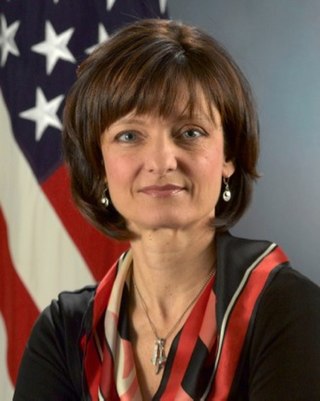
Drexel University is a private research university with its main campus in Philadelphia, Pennsylvania. Drexel's undergraduate school was founded in 1891 by Anthony J. Drexel, a financier and philanthropist. Founded as Drexel Institute of Art, Science and Industry, it was renamed Drexel Institute of Technology in 1936, before assuming its current name in 1970. As of 2020, more than 24,000 students were enrolled in over 70 undergraduate programs and more than 100 master's, doctoral, and professional programs at the university.

Auckland University of Technology is a university in New Zealand, formed on 1 January 2000 when a former technical college was granted university status. AUT is New Zealand's third largest university in terms of total student enrolment, with approximately 29,100 students enrolled across three campuses in Auckland. It has five faculties, and an additional three specialist locations: AUT Millennium, Warkworth Radio Astronomical Observatory and AUT Centre for Refugee Education.

The Medill School of Journalism is the journalism school of Northwestern University. It offers both undergraduate and graduate programs. It frequently ranks as the top school of journalism in the United States. Medill alumni include over 40 Pulitzer Prize laureates, numerous national correspondents for major networks, many well-known reporters, columnists and media executives.

The Columbia University Graduate School of Journalism is located in Pulitzer Hall on the university's Morningside Heights campus in New York City. Founded in 1912 by Joseph Pulitzer, Columbia Journalism School is one of the oldest journalism schools in the world and the only journalism school in the Ivy League. It offers four graduate degree programs.

MIT Technology Review is a bimonthly magazine wholly owned by the Massachusetts Institute of Technology, and editorially independent of the university. It was founded in 1899 as The Technology Review, and was re-launched without The in its name on April 23, 1998, under then publisher R. Bruce Journey. In September 2005, it was changed, under its then editor-in-chief and publisher, Jason Pontin, to a form resembling the historical magazine.

Eugene Eli Garfield was an American linguist and businessman, one of the founders of bibliometrics and scientometrics. He helped to create Current Contents, Science Citation Index (SCI), Journal Citation Reports, and Index Chemicus, among others, and founded the magazine The Scientist.
Daniel Tynan is an American journalist, television and radio commentator who specializes in technology, humor, and humorous takes on technology. Former editor in chief of Yahoo Tech, he has also served as an Executive Editor and later contributing editor for PC World, InfoWorld.com, Family Circle and other publications that have gone on to the great magazine Valhalla in the sky.
The Missouri School of Journalism housed under University of Missouri in Columbia is one of the oldest formal journalism schools in the world. The school provides academic education and practical training in all areas of journalism and strategic communication for undergraduate and graduate students across several media platforms including television and radio broadcasting, newspapers, magazines, photography, and new media. The school also supports an advertising and public relations curriculum.

Portland Monthly is a monthly news and general interest magazine which covers food, politics, business, design, events and culture in Portland, Oregon. The magazine was co-founded in 2003 by siblings Nicole and Scott Vogel. Nicole had previously worked for Cendant Corporation and Time Warner, and Scott had been a journalist at The New York Times. Though the magazine had some trouble with funding in its first year, it grew to a stable circulation of 56,000 and by 2006 was the seventh-largest city magazine in the United States.
The Healthcare Financial Management Association is a professional membership organization that helps healthcare finance management executives and professionals navigate the complexities of the healthcare industry. It is based in Downers Grove, DuPage County, Illinois. Founded on September 30, 1946, the organization serves more than 117,000 members, which include chief financial officers, controllers, and accountants.

Regina E. Dugan, is an American businesswoman, inventor, technology developer and government official. She was the first female director of the Defense Advanced Research Projects Agency (DARPA), where she served from July 2009 until March 2012.
The Gerhard Herzberg Canada Gold Medal for Science and Engineering is awarded by the Natural Sciences and Engineering Research Council (NSERC) of Canada to recognize "research contributions characterized by both excellence and influence." Prior to 2000, NSERC had awarded the Canada Gold Medal for Science and Engineering, before deciding to rename the award to honour Gerhard Herzberg, winner of the 1971 Nobel Prize in Chemistry.
Hossein Rahnama is a Canadian computer scientist, specialising in ubiquitous and pervasive computing. His research explores artificial intelligence, mobile human-computer interaction, and the effective design of contextual services. In 2017, Rahnama was included in Caldwell Partners' list of "Canada’s Top 40 Under 40". In 2012, he was recognized by the MIT Technology Review as one of the world’s top innovators under the age of 35 for his research in context-aware computing. The Smithsonian named Rahnama as one of the top six innovators to watch in 2013. Rahnama has 30 publications and 10 patents in ubiquitous computing, serves on the board of Canadian Science Publishing, and was a Council Member of the National Sciences and Engineering Research Council (NSERC). Rahnama is also a visiting scholar at the Human Dynamics group at MIT Media Lab in Cambridge, MA. He has a PhD in Computer Science from Ryerson University. Rahmnama is an associate professor in Toronto Metropolitan University's RTA School of Media and Director of Research & Innovation at the university's Digital Media Zone.

The Schmidt Family Foundation is a private foundation created in 2006 by Eric Schmidt, the Executive Chairman of Google, and his wife Wendy Schmidt, to address issues pertaining to sustainability and the responsible use of natural resources.
Roy J. Harris Jr. is a reporter and editor who spent most of his career with The Wall Street Journal. He writes frequently about the journalism Pulitzer Prizes, and is the author of Pulitzer’s Gold, a book telling the back stories of 100 years of reporting that has won the United States' top journalism prize, the Pulitzer Prize for Public Service.
Abe Peck is a magazine consultant, writer, editor and professor, known for having been an editor and writer at the Chicago Seed underground newspaper from 1968 to 1971.

LabX Media Group is an Ontario-based media and technology company focused on the biological research community. Founded in 1995 as an online marketplace for laboratory equipment, it has grown through various acquisitions to now have a presence in publishing and laboratory services.
Futurity is a nonprofit website that aggregates news articles about scientific research conducted at prominent universities in the United States, the United Kingdom, Canada, Europe, Asia, and Australia. It is hosted and edited by the University of Rochester.

Clarivate Plc is a British-American publicly traded analytics company that operates a collection of subscription-based services, in the areas of bibliometrics and scientometrics; business / market intelligence, and competitive profiling for pharmacy and biotech, patents, and regulatory compliance; trademark protection, and domain and brand protection. In the academy and the scientific community, Clarivate is known for being the company that calculates the impact factor, using data from its Web of Science product family, that also includes services/applications such as Publons, EndNote, EndNote Click, and ScholarOne. Its other product families are Cortellis, DRG, CPA Global, Derwent, MarkMonitor, CompuMark, and Darts-ip, and also the various ProQuest products and services.

Richard Barclay Gallagher is a Scottish immunologist, science editor, and academic publisher. He is the president and editor-in-chief of Annual Reviews. He graduated with a doctoral degree from the University of Glasgow and was a researcher at Trinity College Dublin before he began working in academic publishing in 1989, holding positions with Elsevier and the journals Science and Nature. In the 2000s, he was the editor of the magazine The Scientist. In 2015, he became president and editor-in-chief of Annual Reviews, where he oversaw the expansion into new journal titles, launched its first online magazine Knowable Magazine, and developed the Subscribe to Open initiative for open access publishing.











